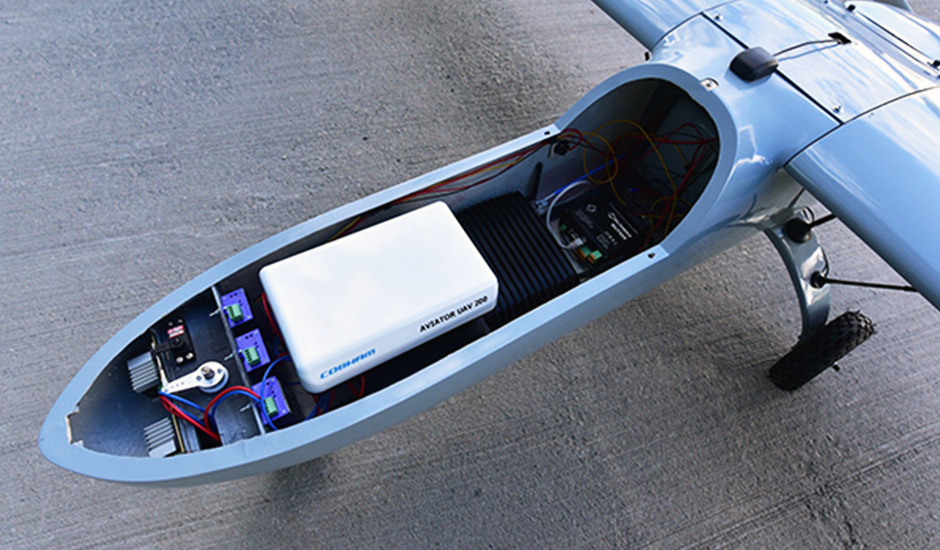The UAS SATCOM Ecosystem: SWaP-Optimized User Terminals, i.e., “Hardware that Fits”
Tom Costello, Chief Commercial Officer, Inmarsat Government
(This is the third of a six-part blog series on how Inmarsat Government supports the Unmanned Aircraft Systems community.)
After elaborating upon Inmarsat’s global coverage and highly available network in a prior blog in this series, we should now discuss “hardware that fits” – user terminals optimized for smaller Size, Weight and Power (SWaP) requirements. This is one of the most important attributes for Unmanned Aircraft Systems (UAS) Original Equipment Manufacturers (OEMs), as well as end users.
Any additional weight to the platform will burden the mission, either limiting flight duration or forcing the jettisoning of another payload to make room. Traditional SATCOM hardware never even made it to the drawing board, especially for groups 2 and 3 UAS, until now.
Rising to the challenge, an Inmarsat Government team of experts reimagined airborne SATCOM hardware with only UAS in mind. SWaP requirements drove the team to adopt to a “mix and match” strategy for the modem, radio frequency (RF) front-end and antenna components.
Working with aviation terminal manufacturing titans such as Cobham, Honeywell, Get SAT, Orbit and Rugged Logic (to name a few), we now deliver speeds over 3 Mbps in both directions in L-band. And with our latest terminal innovation in Ka-band, we soon will be able to offer over 8 Mbps in commercial and 40 Mbps in military Ka-band, from the UAS platform. We offer a wide range of user terminals starting at 3 lbs.
How did we do it? First, we reimagined the modems. We envisioned them as smaller and lighter while still meeting challenging UAS environments with extreme heat, altitude, ocean deployments and non-pressurized environments. At the same time, we committed to hosting our more robust software and waveforms to achieve the same throughput as our larger and heavier terminals.
Next, we focused on the RF front-ends which package the RF amplifiers and diplexers, to either reduce weight or give more power depending on mission needs. We spent the longest time on antennas, because they had to match specific requirements for UAS performance, elevation angles and size, while still closing the revised link budgets, i.e., the theoretical calculation of the end-to-end performance of the communications link.
As a result of these efforts, we have developed a catalog of tailorable hardware components that meet UAS SWaP, mission and performance requirements, backed by reliable aviation manufacturers and assured access to Inmarsat’s global, reliable satellite constellation.
Contact us to learn more about our options and the specific terminal solution for your UAS platform.
Next up on our blog series: Our responsive end-to-end service integration.




